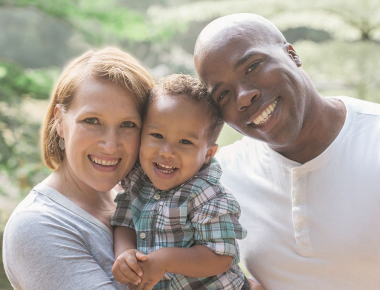Use Your Pause Button: Stop, Drop, and Breathe
A Self-Regulation Strategy for Parents

Our parent clients often come in frustrated with how their children are behaving. They’ve tried everything, and nothing has worked...
...But, the problem might be the parent themselves, and their reactions. That’s why it’s important to also teach the parent self-regulation strategies. Introduce to them the Pause Button: Stop, Drop and Breathe from parenting expert and author, Dr. Laura Markham.
Here’s how:
Sometime this week, you will feel annoyance, irritation, resentment, anger, or even rage in reaction to your child’s behavior. As soon as you notice that you’re angry, use your Pause Button: Stop, Drop, and Breathe. Here are the steps. Post them on your refrigerator so you have them handy.
(Note: You will feel an urgent need to set your child straight. Unless someone is in physical danger, ignore it—that’s a sign you’re in “fight” mode. Your intervention will be more successful if you calm down first.)
Once you’re calm, go back to your child. Set whatever limit is necessary or talk about what happened.
Now that you’ve tried it, here’s a FREE downloadable worksheet which lets you reflect on this process.
This is an excerpt from Dr. Laura Markham’s new book, The Peaceful Parent, Happy Kids Workbook.
If you or your clients want to experience a happier family life, with a lot less drama and a lot more love >>> buy your copy today!
...But, the problem might be the parent themselves, and their reactions. That’s why it’s important to also teach the parent self-regulation strategies. Introduce to them the Pause Button: Stop, Drop and Breathe from parenting expert and author, Dr. Laura Markham.
Here’s how:
Sometime this week, you will feel annoyance, irritation, resentment, anger, or even rage in reaction to your child’s behavior. As soon as you notice that you’re angry, use your Pause Button: Stop, Drop, and Breathe. Here are the steps. Post them on your refrigerator so you have them handy.
(Note: You will feel an urgent need to set your child straight. Unless someone is in physical danger, ignore it—that’s a sign you’re in “fight” mode. Your intervention will be more successful if you calm down first.)
Step 1: Stop, Drop, and Breathe
- Stop. Just stop. Stop everything you’re doing. Close your mouth.
- Drop your agenda. Just for now, let it go. Step away from the fight.
- Breathe. Take three deep breaths to calm yourself, breathing in through your nose and out through your mouth. If you need more breaths, take ten. Becoming conscious of your breath stops your slide down the slippery slope toward losing it and lets you choose how to respond.
Step 2: Choose Love
The hardest part of calming down is choosing to calm down. When we’re in the grip of anger, we want to lash out, not calm down. Make a conscious choice to let the anger go.Step 3: Change Your Mind
Consciously choose an antidote—an image or thought (some people call this a mantra)—that will make you feel more calm and emotionally generous. (Not the mantra type? I’m not suggesting you start “ohmming” in traffic. Just find a thought to interrupt that anxiety loop by reassuring your worried mind.)Step 4: Calm Your Body
Notice the sensations in your body. Shift your emotions by hugging yourself or moving your body—shake out your hands, splash water on your face.Once you’re calm, go back to your child. Set whatever limit is necessary or talk about what happened.
Now that you’ve tried it, here’s a FREE downloadable worksheet which lets you reflect on this process.
This is an excerpt from Dr. Laura Markham’s new book, The Peaceful Parent, Happy Kids Workbook.
If you or your clients want to experience a happier family life, with a lot less drama and a lot more love >>> buy your copy today!



